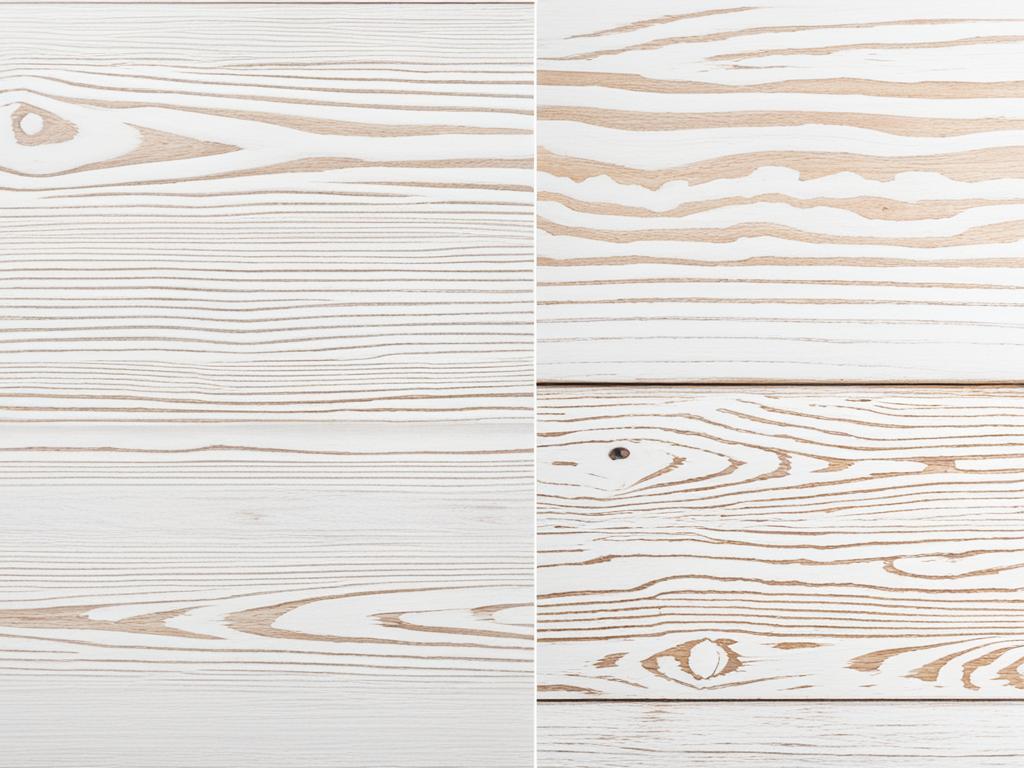When it comes to finishing wood furniture, the decision between white stain and white paint can make a significant difference in the final look. Both options offer their own unique advantages and aesthetic appeal, so it’s essential to understand the differences before making a choice.
White wood stain is a fantastic choice if you want to create a subtle and natural finish that allows the beauty of the wood grain to shine through. Unlike traditional wood stains that enhance the color of the wood, white stain mellows out the tone, resulting in a softer and more muted appearance.
On the other hand, white paint provides full coverage and a true white color. It completely covers the wood grain, giving you a clean and solid white finish. If you want a more vibrant and modern look, white paint is the way to go.
When deciding between white stain and white paint for furniture, consider the desired aesthetic and the level of coverage you prefer. If you want to preserve the natural beauty of the wood while adding a touch of brightness, white stain is an excellent choice. However, if you prefer a fully opaque and crisp white finish, white paint is the way to go.
Key Takeaways:
- White stain offers a subtle finish that allows the wood grain to show through, while white paint provides full coverage.
- When choosing between white stain and white paint, consider the desired aesthetic and the level of coverage you prefer.
- White stain is ideal for unfinished wood furniture and projects where you want to preserve the natural grain of the wood.
- White paint is suitable for projects where you want a clean and solid white finish, such as painted furniture or walls.
- Test different white stains and paints on your wood species before making a final decision to see how they will look.
Best Uses for White Stain vs White Paint
When it comes to choosing between white stain and white paint, it’s important to consider the specific uses and the desired outcome of your project. Both options have unique qualities that make them suitable for different applications. Let’s explore the best uses for white stain and white paint.
White Stain
Unfinished wood furniture: White stain is a great choice for unfinished wood furniture as it adds a touch of elegance while still allowing the natural grain to shine through. It provides a subtle finish that enhances the beauty of the wood.
Wood molding: If you’re looking to enhance the details of your wood molding, white stain can be a perfect choice. It adds depth and character to the molding without masking the grain.
Neutral base: White stain can also serve as a base stain color for other wood projects. By applying white stain as a base coat, you can mellow out the wood tones and create a neutral foundation for further finishing.
White Paint
Painted furniture: White paint is ideal for achieving a clean and solid white finish on furniture. It provides full coverage, completely hiding the wood grain. It’s perfect for creating a classic and timeless look.
Walls: If you’re looking to paint your walls white, white paint is the obvious choice. It delivers a fresh and bright look that can instantly transform the ambiance of a space.
When deciding between white stain and white paint, consider the level of coverage you desire and the overall aesthetic you want to achieve. If you prefer a more natural and subtle look that allows the wood grain to show, white stain is the way to go. On the other hand, if you want a fully opaque and solid white finish, white paint is your best bet.

| White Stain | White Paint |
|---|---|
| Subtle finish | Full coverage |
| Enhances wood grain | Hides wood grain |
| Ideal for unfinished wood furniture | Perfect for painted furniture |
| Can be used as a base stain color | Creates a clean and solid white finish |
How to Whitewash Wood with White Stain
Are you looking to give your wood surfaces a bright and rustic look? Whitewashing with white stain is a versatile technique that can achieve just that. Here’s a step-by-step guide on how to stain wood white and achieve a beautiful whitewashed finish.
Before you begin, it’s important to prepare the wood surface. Start by sanding the wood to remove any existing finish and create a smooth surface. Once the wood is sanded, clean it thoroughly to remove any dust or debris. This will ensure better adhesion of the white stain.
Now, it’s time to mix the white stain with a carrier like water or paint thinner. The ratio will depend on the desired opacity of your whitewashed look. Mix well until you achieve the desired consistency.
Apply the white stain to the wood using a brush or rag, following the direction of the wood grain. Allow the stain to penetrate the surface for a few minutes, giving it time to soak in and create that beautiful whitewashed effect. After the desired amount of time, wipe off the excess stain with a clean cloth.
If you prefer a more intense whitewashed look, you can apply additional coats of white stain after the first coat has dried. Just repeat the process, allowing each coat to dry completely before applying the next.
To protect the whitewashed finish and give it a durable and lasting shine, make sure to seal the wood with a clear polyurethane sealer. This will also help preserve the brightness of that beautiful white finish over time.
So there you have it – a simple and effective guide on how to stain wood white and create a stunning whitewashed look using white stain. With these easy steps, you can transform various wood surfaces and bring a bright, rustic charm to your home.
